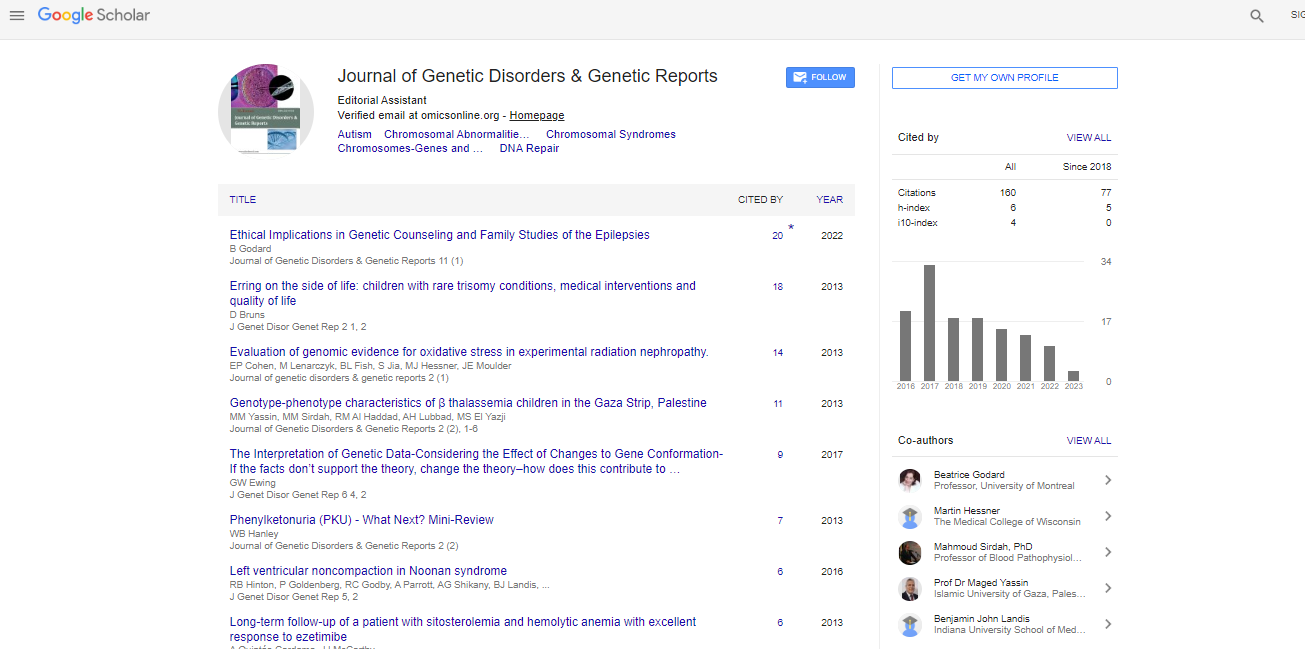Review Article, J Genet Disor Genet Rep Vol: 7 Issue: 3
Non-Viral Vectors for Cystic Fibrosis Therapy: Recent Advances
Faisal Qaisar, Anum Habib, Noor Muhammad and Zia ur Rehman*
Department of Biotechnology and Genetic Engineering, Kohat University of Science and Technology, Kohat 26000, Khyber Pakhtunkhwa, Pakistan
*Corresponding Author : Zia ur Rehman
Department of Biotechnology and Genetic Engineering, Kohat University of Science and Technology, Kohat 26000, Khyber Pakhtunkhwa, Pakistan
Tel: +92 3337757504
E-mail: ziamarwat77@gmail.com
Received: June 28, 2018 Accepted: October 19, 2018 Published: October 26, 2018
Citation: Qaisar F, Habib A, Muhammad N, Rehman Z (2018) Non-Viral Vectors for Cystic Fibrosis Therapy: Recent Advances. J Genet Disor Genet Rep 7:3. doi: 10.4172/2327-5790.1000179
Abstract
Gene therapy, which is the transfer of genetic materials into the cells for therapeutic purposes, holds a huge promise in treating various hereditary diseases. Gene therapy tools are currently being used for wide range of monogenic and multigenic disorders including but not limited to cystic fibrosis. Cystic fibrosis is caused due to mutations in a cystic fibrosis trans-membrane conductance regulator (CFTR) gene and therefore, works as a model disease in gene therapy field. However, an ideal delivery vehicle, that ensures both efficient intracellular delivery and subsequent sufficient expression of transgene is still lacking. Fundamentally, two types of vectors are currently used to cross various cellular barriers broadly named as viral vectors and nonviral vectors. Viral vectors, as the name indicates, uses modified viruses for the transfer of genetic material into the cells. Viral vectors have greater efficiency in terms of transferring genetic materials; however, their toxic nature, immunogenicity and possible mutagenicity put their therapeutic applicability at question. On the contrary, nonviral vectors including cationic polymers and lipids, have recently gained more attention as alternatives to viral vectors. This can be attributed to their lesser immunogenicity, lower toxicity and ability to carry large nucleic acid fragments. In the current review we will first, briefly highlight various extracellular and intracellular barriers faced by nanocarriers during the process of gene delivery. Afterwards, we will pinpoint the most recent modifications made in these nanocarriers to cross these barriers efficiently which will subsequently allow us to use them in CF and other monogenic diseases therapy.
 Spanish
Spanish  Chinese
Chinese  Russian
Russian  German
German  French
French  Japanese
Japanese  Portuguese
Portuguese  Hindi
Hindi 



